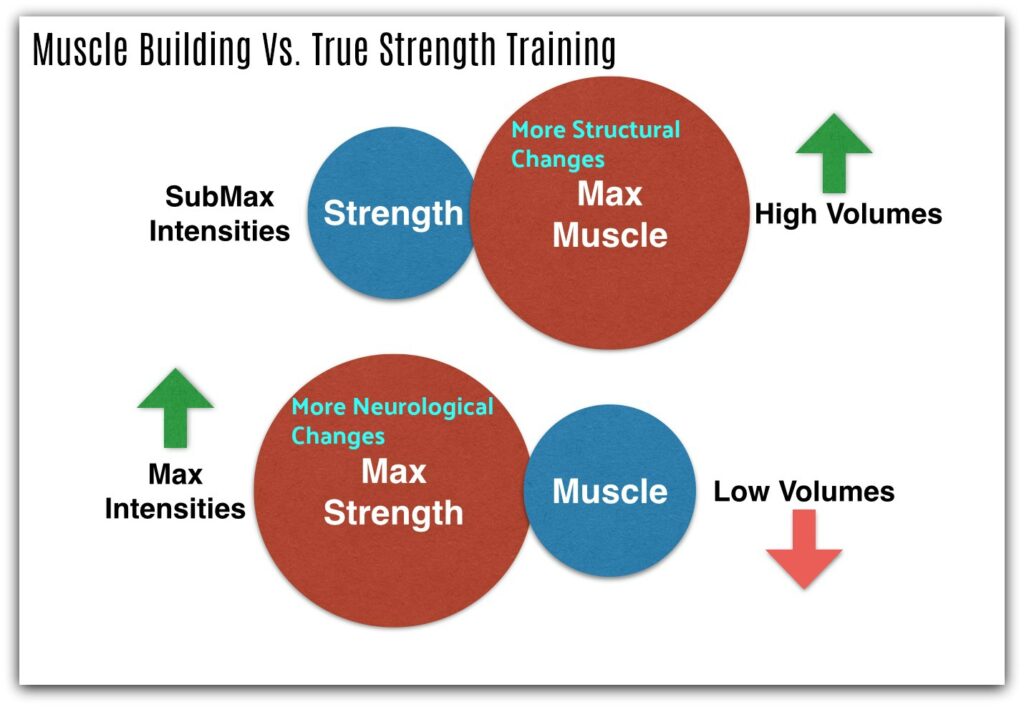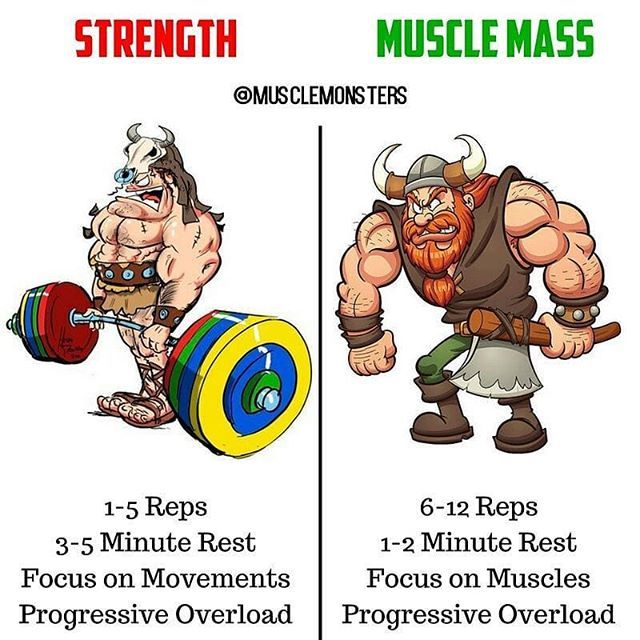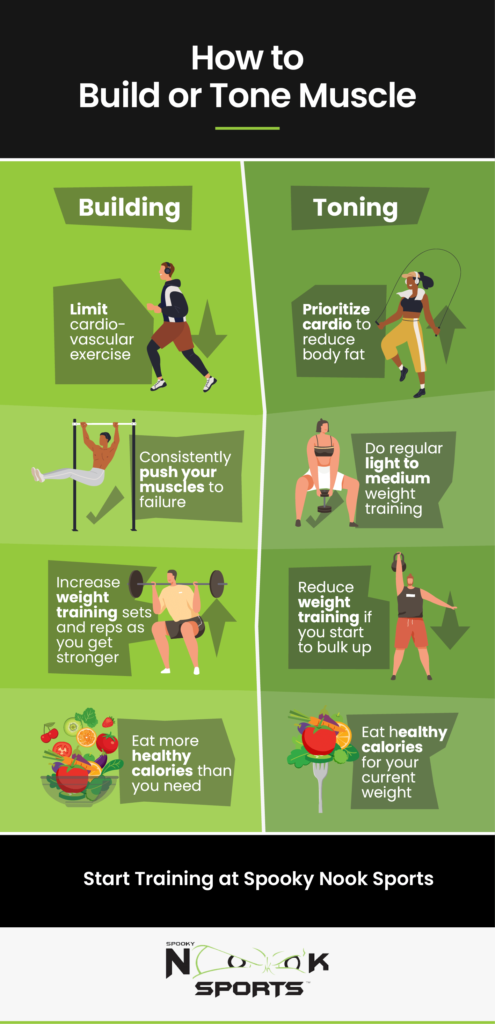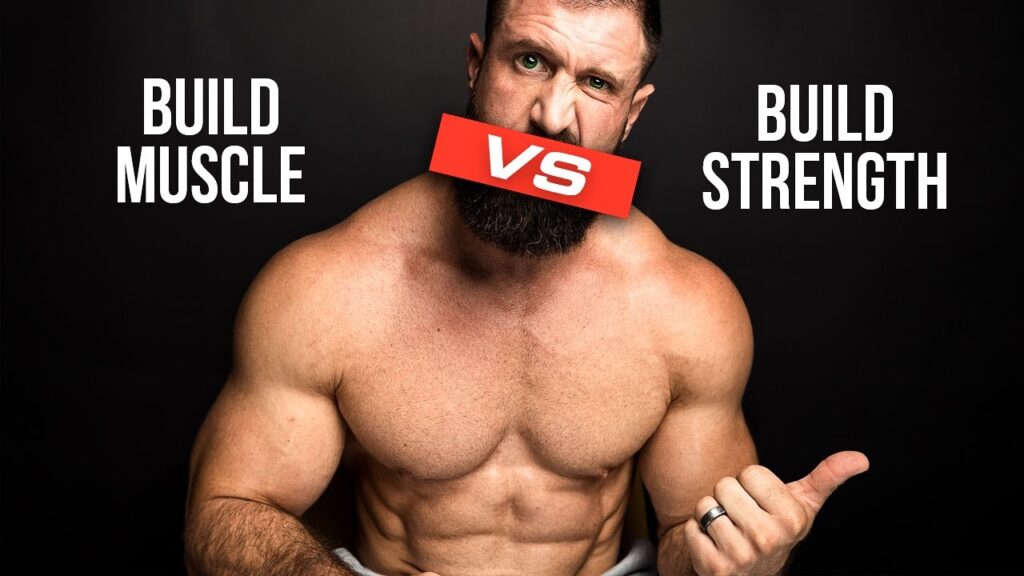Muscle growth focuses on increasing muscle size. Strength training aims to improve muscle power and performance.
Muscle growth, also known as hypertrophy, involves exercises designed to enhance muscle size. This typically includes higher repetitions with moderate weights. Strength training, on the other hand, emphasizes increasing the ability to exert force. This usually involves lifting heavier weights with fewer repetitions.
Both approaches are essential for overall fitness and can complement each other. Understanding their differences helps in tailoring workouts to meet specific fitness goals. Whether the aim is to build muscle mass or boost strength, a balanced routine can yield the best results.
Muscle Growth Basics
Hypertrophy is the process of muscle growth. Muscles get bigger by increasing the size of muscle fibers. Weight lifting helps muscles grow. Repetitive exercises with weights are essential. This process requires consistent training and a healthy diet. Muscles need protein to repair and grow.
Muscles have two types of fibers: Type I and Type II. Type I fibers are for endurance. They help in activities like running. Type II fibers are for strength. They help in activities like lifting heavy weights. Both types are important for balanced muscle growth. Training can target both types of fibers.

Credit: honehealth.com
Strength Training Fundamentals
Neuromuscular adaptations involve changes in your brain and muscles. These changes help you lift heavier weights. Your brain learns to recruit more muscle fibers. This means you get stronger over time. The nerves send better signals to your muscles. This makes your movements more efficient. Your muscles also become more coordinated. This helps you perform exercises with better form.
There are different types of strength. Maximal strength is the heaviest weight you can lift once. Explosive strength is how fast you can lift a weight. Endurance strength is how long you can lift a weight. Relative strength is your strength compared to your body weight. Each type is important for different sports and activities. Training methods vary for each type.
Goals And Objectives
Muscle growth focuses on increasing the size of muscles. This is also known as hypertrophy. People often aim for a sculpted physique. Workouts involve lifting moderate weights with higher repetitions. Rest periods between sets are usually shorter. Diet plays a crucial role in muscle growth. Consuming enough protein and calories is essential.
Strength training aims to increase power and endurance. This helps in performing daily tasks and sports better. Workouts involve lifting heavier weights with fewer repetitions. Rest periods between sets are usually longer. Diet is important but focuses on overall nutrition. Proper technique prevents injuries and improves results.
:max_bytes(150000):strip_icc()/3498255_Good_morning_Exercise1-5686f7deb1bb426ca8bfcdaac10da02a.jpg)
Credit: www.verywellfit.com
Training Techniques
Muscle growth focuses on increasing the size of muscle fibers, while strength training aims to enhance the muscles’ capacity to exert force. Different training techniques and routines target these distinct goals.
Volume Vs. Intensity
Muscle growth focuses on higher volume. This means more sets and reps. Strength training focuses on higher intensity. This means heavier weights. Volume helps muscles get bigger. Intensity helps muscles get stronger. Both methods are important. Each has its own benefits.
Repetition Ranges
For muscle growth, aim for 8-12 reps per set. This range helps build size. For strength training, aim for 1-5 reps per set. This range builds power. Different rep ranges target different goals. Choose the range that fits your goal. Balance both for best results.
Nutritional Differences
Muscle growth requires more protein. Aim for 1.2 to 2 grams per kilogram of body weight. Strength training also needs protein but usually less. Around 1.2 to 1.7 grams per kilogram is enough.
Muscle growth needs a higher calorie intake. Eat more than you burn. Strength training can work with a balanced or slight calorie increase. Don’t eat too much or too little.
Recovery And Rest
Sleep is essential for muscle recovery and growth. The body repairs itself during sleep. Aim for 7-9 hours of sleep each night. Quality sleep can improve your strength and performance. Avoid screens before bedtime for better sleep quality.
Active recovery involves light exercises, like walking or stretching. It helps improve blood flow to muscles. Passive recovery means complete rest. This allows the body to heal and recharge. Both types are important for muscle health. Choose the type based on your workout intensity.
Common Misconceptions
Many think bulking means eating anything. This is not true. Healthy foods are important. Junk food won’t help build muscle. Quality matters more than quantity. Eating too much junk can add fat, not muscle. Balanced meals are key. Protein, carbs, and fats should be balanced. This helps muscles grow and recover.
Strength training and muscle growth are different. Strength training focuses on lifting heavy weights. Muscle growth focuses on muscle size. Lifting heavy weights makes you stronger. But it might not make your muscles bigger. Muscle growth needs higher reps with lighter weights. Both are important for a balanced body. Combining both can give the best results.

Credit: m.youtube.com
Program Design
Periodization is a key element in training plans. It involves breaking down your training into different phases. Each phase has a specific goal. This helps to avoid plateaus and overtraining. For muscle growth, phases focus on hypertrophy. For strength, phases focus on maximal strength. Both require planned progression. This ensures continuous improvement.
Choosing the right exercises is crucial. Muscle growth needs compound and isolation exercises. Compound exercises work multiple muscles. Isolation exercises target specific muscles. For strength training, focus on compound lifts like squats and deadlifts. These build overall strength. Use isolation exercises for weak points. Both training types need variety to prevent boredom. Always include exercises that match your goals.
Frequently Asked Questions
What Is Muscle Growth?
Muscle growth, or hypertrophy, refers to the increase in muscle size. This occurs due to resistance training. It involves the enlargement of muscle fibers. Nutrition and rest are also crucial.
What Is Strength Training?
Strength training aims to increase muscle power and endurance. It focuses on lifting heavier weights over time. Strength training improves overall physical performance. It is essential for athletes and fitness enthusiasts.
How Do Muscle Growth And Strength Training Differ?
Muscle growth focuses on increasing muscle size. Strength training emphasizes increasing muscle power and endurance. Both involve resistance exercises. However, their goals and methods differ.
Can Muscle Growth And Strength Training Be Combined?
Yes, they can be combined. Many fitness programs include both. Combining them improves muscle size and strength. It also enhances overall fitness.
Conclusion
Understanding the difference between muscle growth and strength training helps you achieve fitness goals effectively. Muscle growth focuses on increasing muscle size. Strength training enhances overall power and endurance. Tailor your workout plan to match your desired outcomes. By doing so, you maximize your progress and reach your fitness targets efficiently.











